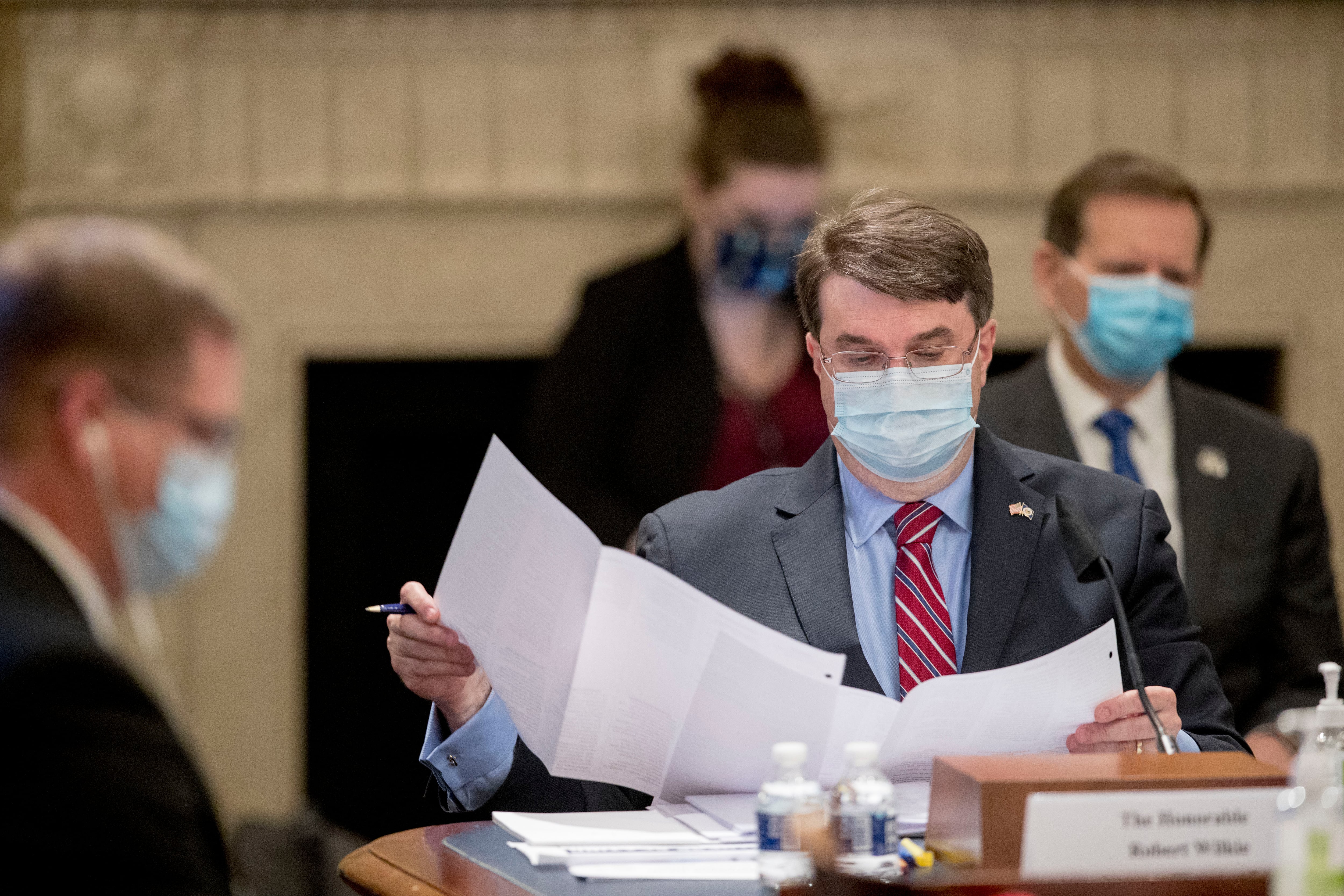Veterans Affairs’ top health official said the current 30-day supply of personal protective equipment is about half what he wants it to be and about five months less than what will be needed if the coronavirus pandemic has a second wave in the fall.
“A surge (this fall) is a complete unknown,” said Dr. Richard Stone, executive in charge of the Veterans Health Administration, during a Senate Veterans’ Affairs Committee hearing Tuesday on the department’s supply chain challenges.
“All we have to go by is what happened in the fall of 1918 with the influenza pandemic where the second wave had a dramatically greater mortality than the first wave.”
RELATED

Despite those problems, however, Stone said he believes the department’s response to the pandemic this spring was laudable, and insisted that increased worldwide demand on medical masks, gowns and gloves has not put any employees in danger.
“No facility at VA ever ran out of protective equipment, and we are taking steps to ensure that we never risk exhaustion of our supplies and future disasters,” he said. “We are working diligently to not only prepare for a potential second wave of COVID-19, but also for any other disaster the nation might face.”
VA leaders have faced criticism from union officials in recent weeks over the availability and resupply of protective equipment for employees. Stone has publicly acknowledged austerity measures were put in place earlier this spring to preserve supplies, but has said he does not know of any shortages that endangered patient or employee safety.
Nearly 1,400 VA patients have died from coronavirus related complications in the last three months, an increase of 16 percent since the start of June. Another 33 employees have also died.
“To suggest that we have in some way endangered our personnel is just not borne out by the facts,” Stone said in response to senators’ questions about whether supply problems may have led to employee infections.
More than 1,600 employees and 16,000 VA patients have been diagnosed with the virus since early March. The number of active cases spread across the department’s health system decreased steadily through May, but has risen by about 25 percent since then to 1,754 as of Tuesday morning.
Last week, Stone said he was not alarmed by that increase, and expected to have at least 600 active coronavirus cases in the VA health system through this fall.
However, he expressed concern about the possibility of a fall surge in illnesses related to the virus, saying that officials must begin preparations now to ensure supplies are sufficient for that potential devastation.
“Prior to this, we purchased $10 million a month worth of PPE in the VA. We're now purchasing $100 million of PPE a month,” he said.
“Certainly costs have gone up dramatically as part of this (outbreak). But that does reflect a massive consumption of PPE in which the industrial base of this nation must be developed to respond.”
RELATED

Stone told lawmakers he wants a 60-day supply of PPE on hand, and said officials are working with vendors and other federal agencies to reach that goal. However, he acknowledged that a full second wave of corornavirus “will need an additional six months of supply,” given the rise in cases and the risk of infection.
More than additional funding, Stone said the key to reaching those supply levels will be increased production from American companies. “The current supply chain is still struggling to support not just our needs, but the needs of every healthcare system and hospital in the country,” he said.
Earlier in the day, Senate Veterans’ Affairs Committee leaders petitioned President Donald Trump to add VA Secretary Robert Wilkie to the Defense Production Act Committee, charged with overseeing solutions to those supply chain issues.
Leo covers Congress, Veterans Affairs and the White House for Military Times. He has covered Washington, D.C. since 2004, focusing on military personnel and veterans policies. His work has earned numerous honors, including a 2009 Polk award, a 2010 National Headliner Award, the IAVA Leadership in Journalism award and the VFW News Media award.





